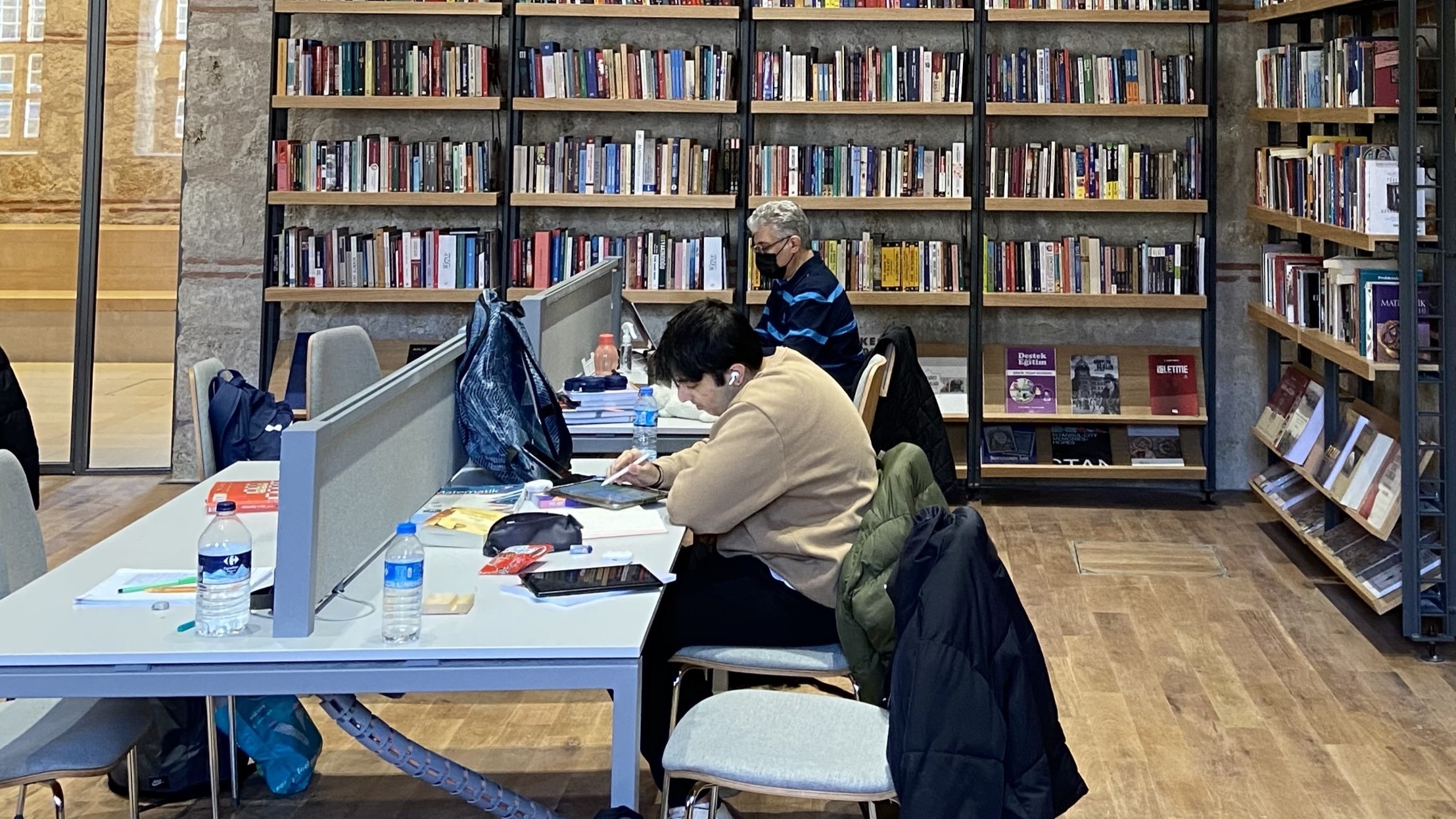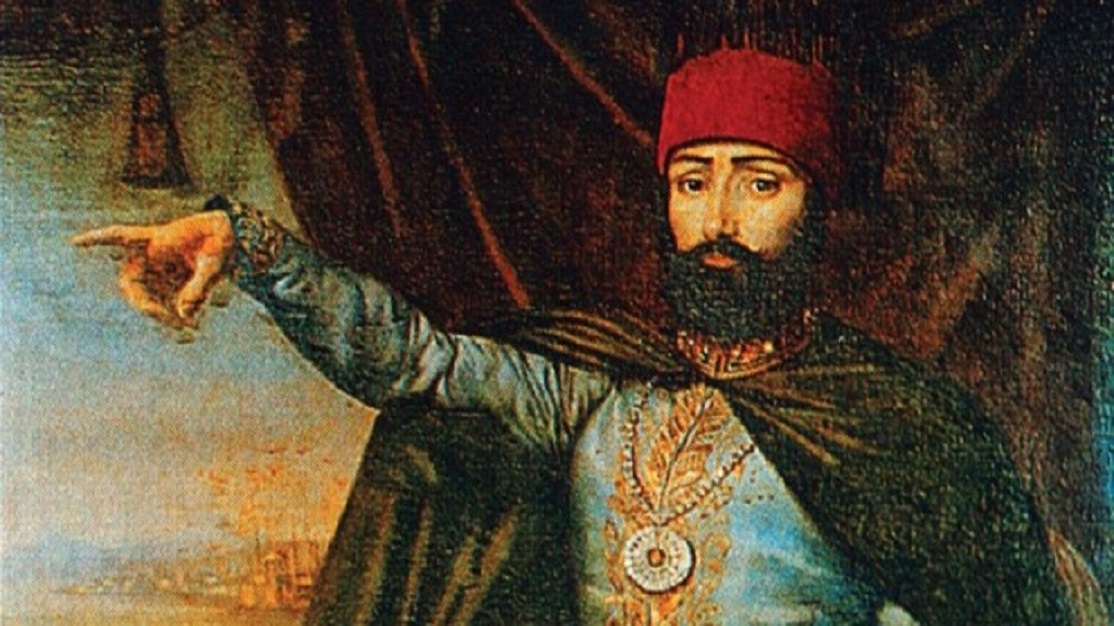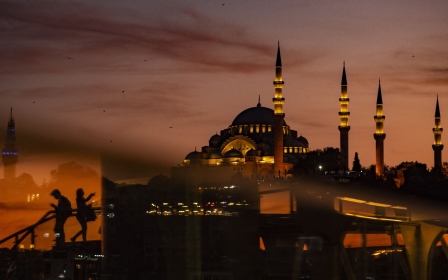Istanbul's Rami library: From army barracks to place of learning

For decades after the Rami barracks stopped serving their military function in the 1960s, fate seemed to have served the historic Istanbul landmark a cruel hand.
In the 1980s, the building complex in the Eyup district variously served as a car park, football pitch, and even a food warehouse. That was despite it being registered as a state-backed “cultural property” in 1972.
Today though, after an eight-year-long restoration project, the once-ailing building has been put to undeniably more appropriate use.
Earlier in January, the 18th-century structure formally took up its role as Istanbul’s largest library.
Now dubbed the Rami Library, the complex houses seven million books and other documents, including rare manuscripts and special collections.
Inside there is a seating space for 4,200 people and enclosed within its walls are 36,000 square metres of bookshelves, restoration rooms for old manuscripts, interview halls, a cafe, a bookstore, and a small museum.
Its long corridors are decorated with artwork inspired by Turkey’s past, as well as modern artists.
The institution hopes to draw both researchers and ordinary people and even has a 51,000-square-metre garden for public use.
Historic reforms
While the library itself takes up its mantle as one of Istanbul’s newest landmarks, the site and building itself have historic importance.
With initial structures dating back to the 18th century, the barracks were constructed on the orders of the Ottoman Sultan Mahmud II.
By 1826, the Turkish ruler had overseen the abolition of the increasingly unruly Janissary and decided to form a modern standing army in their place.
The barracks were part of this process of modernisation, which Ottoman officials hope would turn the Empire into an effective force against European powers.
Not long after, in 1828, this new military administration faced its first test with the outbreak of the Turkish-Russian War.
The conflict was notable in that the sultan himself declared himself the commander of the Ottoman forces – the first monarch in more than a century to do so.
With a lavish ceremony, officials raised the Ottoman sancak (banner) at the barracks and the sultan took up residence there, commanding his armies from afar for two years. It was essentially the 19th-century Ottoman equivalent of a command centre.
But it was not just beating the Russians that Mahmud had on his mind while based there (the Ottomans actually lost the war). The Turkish sultan also embarked on a bold campaign to modernise the country in the hope of competing with Europe.
Many of these changes were cultural in nature, including a royal decree ordering the introduction of trousers and the fez instead of traditional robes and turbans.
Despite objections from the elites over the move, Mahmud was insistent, exempting only the ulama from wearing this new western style of clothing.
Despite that exemption, there was plenty for the Ottoman religious elite to take issue with.
Istanbul’s 200-year-old Rami army barracks have been transformed into a gigantic library by Turkey’s ministry of culture
— Ragıp Soylu (@ragipsoylu) January 20, 2023
It is dubbed as the third largest library in the world in terms of its total size
pic.twitter.com/agbOWNKQrX
Mahmud’s decision to hang his portrait along the walls of the barracks was cause for consternation amongst Muslim scholars, as it violated a long-standing taboo on displaying human images.
There was also unease at other new western habits, such as playing European music and holding ballroom dances.
Cadets assigned to the military school within the barracks were also given a western education.
Yuksel Celik, a professor at Marmara University and author of a book on Mahmud's reforms calls the structure “the headquarters of despotic modernisation”.
"Mahmud II used the Rami Barracks as his administrative and military headquarters for 617 days and thanks to the conditions of war, he managed to apply his reforms without facing powerful resistance," Celik writes.
The academic further explains that the sultan hoped that reforming the army would naturally force reforms in other fields, such as the judiciary and state bureaucracy.
French occupation
The barracks continued to be the headquarters of the modern Ottoman army after the sultan’s death with a brief but significant interlude after the First World War.
In 1918 during the allied occupation of Istanbul, French troops took over the barracks with their commanders placing a huge cross on a minaret on the mosque within the compound.
The move was seen as inflammatory by both the Turks and Algerian soldiers who were part of the French army and the two would seemingly collude to get their revenge.
During a Friday prayer ceremony in Eyup Mosque, where Abu Ayyub al-Ansari, one of the closest companions of Prophet Muhammad, is buried, Algerian troops were approached by a local preacher, Kemal Efendi, who asked them not to be complicit with the French occupation.
The Turks hoped that appealing to the religious sensitivities of the Algerians would help them in their efforts to get rid of the occupation forces.
While the exact sequence of events remains unknown to this day, a series of explosions at the site did allow members of the Turkish resistance to smuggle ammunition out of the buildings.
The arms were taken to ships waiting to transport them to Anatolia where Mustafa Kemal Ataturk was waging his eventually successful campaign to free the Turkish mainland of foreign occupiers.
When the Turkish Army took back control of Istanbul in 1923, one of the first things its troops did was to pull down the cross on the mosque, Nur Bilge Criss recounts in her book, Istanbul Under Allied Occupation, 1918-1923.
While the stories associated with the Rami barracks are widely known in Turkey, the building itself is only now returning to the public consciousness, albeit in a new way disconnected from its military past.
Istanbulites will now be able to enjoy the facilities on offer 24 hours a day, seven days a week, with many remaining entirely unaware of the intrigues that once unfolded within its walls.
Middle East Eye delivers independent and unrivalled coverage and analysis of the Middle East, North Africa and beyond. To learn more about republishing this content and the associated fees, please fill out this form. More about MEE can be found here.






